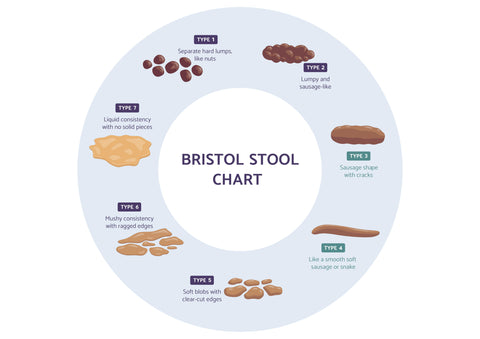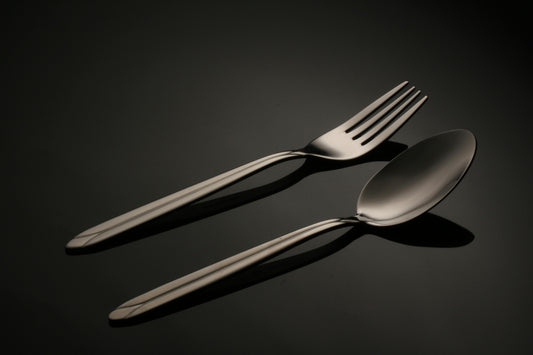Many of us experience bowel issues such as constipation or diarrhea, yet we often hesitate to talk about them due to embarrassment or stigma. However, Dr. Sebi had valuable insights on why these imbalances occur and how to correct them.
Our bowel habits and stools can reveal a lot about our overall health and well-being, such as the balance of gut bacteria, hydration levels, enzyme effectiveness, and nutrient absorption. Addressing imbalances in the digestive tract can prevent further health issues.
By paying attention to our bowel habits and stools, we can gain valuable insights into our bodies and take steps towards achieving balance.
The Bristol Stool Scale
The Bristol stool scale is a widely used tool for classifying and assessing human bowel movements. Developed at the Bristol Royal Infirmary in 1997, it categorizes stools into seven types, ranging from separate hard lumps (Type 1) to entirely liquid (Type 7).
- Types 1 and 2 indicate constipation.
- Type 3 and 4 are easy to pass.
- Type 5 indicates lack of dietary fiber.
- Types 6 and 7 indicate diarrhea.
According to research conducted by the Mayo Clinic College of Medicine, about 1 in 5 people have slow transit (Type 1 and 2 stools) and 1 in 12 have accelerated transit (Type 5 and 6 stools).
What Type Are You?

What is Elimination?
The digestive tract is often thought of as a single, continuous system, with each part - the mouth, esophagus, stomach, small intestine, and colon - working together to process food and eliminate waste. However, it is important to note the ancient distinction between the "food pipe" (starting at the mouth and ending at the small intestine) and the "waste pipe" (beginning at the colon and continuing to the anus).
While the two pipes are interconnected and can impact each other, the food pipe is primarily responsible for taking in nutrition, while the waste pipe is mainly responsible for elimination, including absorbing water, forming stools, removing solids, clearing heavy metals, and escorting toxins and waste metabolites out of the body.
What is Healthy Elimination?
Ideally you should move your bowels one to two times a day, with the first movement ideally occurring soon after waking to remove toxins processed by the liver overnight. A second movement may occur later in the day, often after a meal.
Healthy stools are:
- Well-formed (over-ripe banana in consistency).
- Maintain their shape after elimination.
- Light brownish-yellow in color
- Float but flush easily.
- Lubricated and easy to pass.
- Non-sticky (minimal wiping required).
- Only a mild odor.
However, it is common for stools to fall short of this ideal due to our fast-paced lifestyles, stress, processed foods, and eating on the run, all of which can negatively impact digestive and excretory function. If digestion is not complete and excretion is slow then waste matter builds up and putrefies, releasing endotoxins, ammonia, and other noxious substance, your body is trying to eliminate these substances for a good reason!
Enhancing Elimination
Obviously eating a healthy diet is one way to improve digestion, and specifically relieve constipation. But, there are many more ways to enhance your excretory experience.
Hydration
Water is essential for digestion and elimination. Signs of under-hydration include dark, pungent urine, infrequent urination, constipation, and dry skin. To increase fluid intake, try drinking a cup or two of warm water upon waking (which specifically moves the bowels), and a large glass of warm or room temperature water 20-30 minutes before meals (but not with a meal as it dilutes stomach juices). Avoid sodas and caffeinated beverages and focus on drinking natural spring water and herbal teas.
Routine
Your body (and epigenetics) thrive on a sense of routine. Regularity in our schedules creates regularity in our bowels. If you don't have a set routine, try starting with simple daily focal points such as going to sleep and waking up at the same time, and eating at consistent times. This will give your nervous systems a sense of normalcy, upregulate rhythmic digestive clock-genes, and reduces stress by creating control and a sense of expectation.
If your elimination is not regular, consider setting aside a few minutes each morning for a bowel movement, even if there is no urge. Sit quietly on the toilet, breathe deeply and relax. This can help establish a more regular elimination habit over time and reduce some of the stress associated with chronic constipation.
Relaxation
Stress can have a significant negative impact on overall health, particularly on digestion and elimination.
Meditation is an effective technique for reducing stress and promoting constructive responses to stressful situations. Just 10-15 minutes of daily meditation can have a significant impact on the mind and digestive health.
Deep breathing is another technique that helps balance the nervous system and reduces chronic stress that can cause imbalances in the digestive tract. By breathing deeply into the abdomen, tension patterns that inhibit digestion and elimination are naturally released.
Movement
Regular exercise is crucial for maintaining regular bowel habits. A sedentary lifestyle can slow the metabolism and cause sluggish bowel movements. Aim to exercise 3-4 days per week to boost metabolism and support regular elimination. Even a simple 20-minute brisk walk can make a significant difference. Yoga is also an effective therapy for reducing stress, strengthening digestion, and promoting proper elimination.
Mindfulness
Paying attention to the act of eating is crucial for optimal digestion. Focusing on the present moment while eating can greatly improve the digestive process. The sights, sounds, smells and tastes while cooking, help to stimulate the right digestive enzymes and juices for the meal you are about to eat. Eat slowly, chew well, and put your fork down occasionally.
Timing
The metabolic function works best when it is allowed to completely digest one meal before starting on another. It is recommended to allow at least 3-4 hours between meals. This time frame may vary based on the meal and the individual, but the return of natural hunger is usually a good indicator that there has been a long enough gap between meals.
Hunger
Appetite is a key indicator of when the body is ready to eat again, and that the digestive process is equipped for more. You wouldn’t get halfway through a load of laundry, stop the machine, and shove some more in, it would upset the entire process! Often hunger is actually thirst, frequently its habit, and many times we misrepresent the desire to suppress uncomfortable feelings as a need to eat.
Emotions
It is best to eat only when truly hungry, but distinguishing true hunger from emotional cravings can be challenging, and it's important to be emotionally objective. If you have had a substantial meal within the last 3-4 hours, it's likely that what you feel is an emotional craving rather than hunger. True hunger is characterized by a natural feeling of lightness, clarity, and pleasant anticipation, and is satisfied by food.
Cravings make you repeatedly search cupboards, overeat and still not feel satisfied. True hunger is satisfied by a delicious healthy meal, cravings want something entirely different!
Quantity
In just 30 years fast-food portion sizes have more than doubled (226% bigger). Stretching the stomach puts stress on the entire digestive system and often leads to Type 2 Stools as immediate evacuation is the body’s only way to cope. Overeating is driven by addictive substances (sugar and refined carbohydrates) you can’t satisfy an addiction so its hard to stop eating. Eating smaller portions allows complete digestion, a good-sized meal is the amount of food that can be held in two cupped hands. Don’t stop eating until full, stop when there is room still for the stomach to churn and digest – just like you should not overload your washing machine!
Cleanse
Clearing out deeply rooted substances, pathogens, plaque, and mucus is a potent way to support your elimination. Rebalancing bacteria, cleansing toxins, removing blockages, and allowing the body’s inherent intelligence to rebalance the digestive process. When we take a break from filling up the ‘pipes’ and instead clean them out you can imagine the relief! Have you ever looked inside an old sink pipe? They are coated and clogged with a thick black tar like substance which is decades of decomposing food. Now consider if your pipes might need a clean out too?
The combination of embarrassment and the ‘out of sight out of mind’ effect, results in us ignoring the potential problems lurking in our innermost systems. If your sink was blocked it’s obvious you need to unblock it. But what if your sink was leaking, into your cupboard, for years, before you noticed?
|
|
|
Start taking care of your colon and eliminating toxins and waste from the previous year. Chelation 2, featuring Mandrake, Prodigiosa, Rhubarb, and Cascara Sagrada, helps improve digestion, reduce inflammation, and support weight loss. Bio Ferro Capsules, featuring Chaparral, Burdock Root, Nettle, Nopal, Yellow Dock, Muicle, Irish Sea Moss, Cascara Sagrada, and Blue Vervain to help cleanse and nourish the blood. Viento, containing Bladderwrack, Blue Vervain, Chaparral, Flor de Manita, and Guaco, can help curb cravings, boost energy, and support overall health.
|
Citations
[1] Young LR, Nestle M. The contribution of expanding portion sizes to the us obesity epidemic. Am J Public Health. 2002;92(2):246-249.



















































